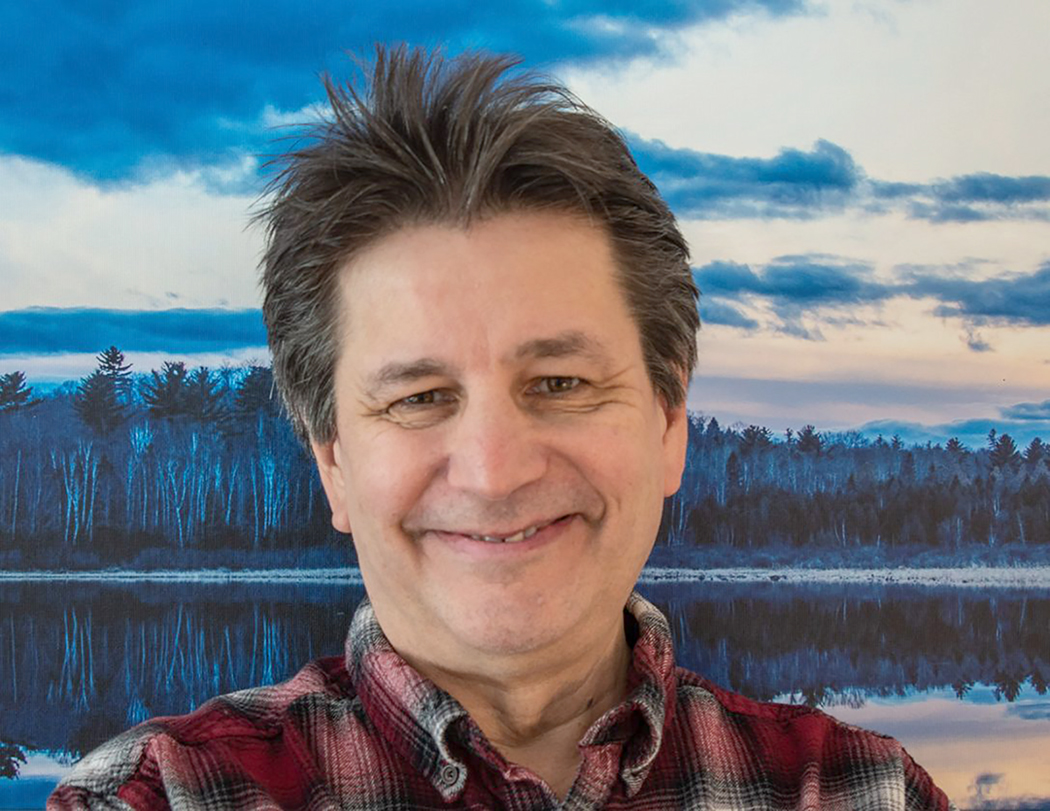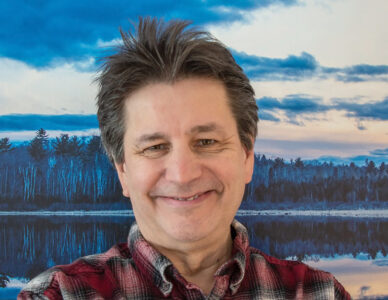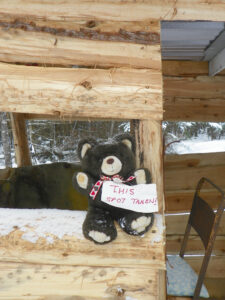Tracks on the trail on a snowy November day
Outdoors North

John Pepin
“From the railhead to the boatyard, from the factory to the farm, from the mine to the mill yard, I’ve weathered the storm,” – Gordon Lightfoot
I moved along a makeshift trail, my boots leaving clearly marked footprints in the snow. The white blanket was about a foot deep, but it was light and fluffy.
At the ground level in those tracks, the snow was wet, likely because of the cold precipitation falling on the relatively warmer ground.
I saw the fresh tracks of two deer ahead of me.
I continued ahead, not really expecting that our paths would cross out there under the maple trees, along the cold, black snake of a river that flowed nearby.
From my vantage point, I could see the water moving very slowly and deliberately, almost as though if it moved any slower it might freeze.
The river was situated down a steep and muddy bank from where I walked.
If I slipped, it would be a quick and icy drop, with the water probably about waist deep.
In my growing-up kid days, in the hot summertime, this same river provided cool comfort as we waded in pursuit of cunning brook trout or just an afternoon of fun.
In my mind, I can still smell the goldenrod, wild roses and the creosote from the blackened ties of the railroad bridge.
Today, the railroad tracks have been torn up and the railroad bridge is gone, leaving a gap – like a missing tooth – where the span had connected the tracks above the water.
The trail moved me down a little dip. As I walked up the other side of it, I saw a spikehorn deer standing still, staring at me as I approached.
One set of those tracks was his.
When our eyes met, I stopped and stared back.
As I bid the stag hello, he sniffed the air and continued to watch, seemingly interested and curious about the sound of my voice.
“Hello, you baby,” I said.
With that, he dropped his head, took a couple of casual steps deeper into the woods, sniffing the ground.
As I moved forward, I noticed a doe, standing farther back in the trees. She looked at me too. I offered her the same greeting, to which I received much the same response.
Neither of the deer seemed bothered by my presence.
They had other things in mind on this overcast afternoon.
It was November after all, the time of the season when deer mate and – when the temperatures and weather turn wintry enough – decide to migrate from the northern part of the peninsula south to the milder “banana belt.”
I kept moving down the trail after lifting my chin toward the deer, which was my farewell bid.
November is also a time when migrating birds from the northern latitudes begin to arrive for their seasonal stay here in these Great North Woods.
Taking a glance at any bird spotted at this time of the year can produce interesting results. This was proven to me this same day when I found two birds in our crabapple tree that turned out to be pine grosbeaks, the first ones we’ve had in several years.
A dozen evening grosbeaks also appeared in one of our backyard maple trees, a species that has been dwindling in shocking decline in the eastern U.S. over recent decades.
The Vermont Center for Ecostudies said the species has declined about 90% over the past 50 years, with habitat loss, climate change and competition with other seed-eating bird species detailed as the causes.
Evening grosbeaks were the first birds I really took more than a passing interest in when I was a kid about to get hooked on birdwatching and studying.
A flock of about 50 landed in the branches of a big maple that hung over part of our backyard from the neighbors’ property. The bright and contrasting yellow, black and white of the males were striking to see.
I conducted an identification quest to find out more about these birds, which included a trip to the library down the street, which in turn, introduced me to the Roger Tory Peterson Field Guide to Eastern Birds.
There is some good population news. The species’ numbers are increasing in some localized parts of the northeast, indicating that the decline is not uniform everywhere, the center said.
Other wildlife watchers throughout the region have reported additional winter arrivals from the north, including snow buntings, rough-legged hawks (which have light and dark color types), Bohemian waxwings and snowy owls.
I would love to see any of those species. I only encounter them infrequently and when I do, it’s always a treat to enjoy. The eastern U.P. is a good place to look for all those species and more, like great gray and northern hawk owls too.
It’s only been a couple of months since the end of trout season, but seeing the river makes my skin crawl wishing I could take a cast in the river, my mind imagining the roll and strike of a big brookie.
Snowy, cold and blustery days bring on some of the best nights for backyard campfires and saunas, as well as indoor fireplace blazes. We’ve got wood stacked up and we’re ready to go.
We had nice fires in the fireplace on a couple evenings this week that left my wife and I both asleep in our respective sitting or reclining spots.
With the splendid warmth penetrating deep down to our bones, the heavenly aroma of wood smoke in the house and plenty of long-lasting flames to watch – the entire experience is one that we truly love.
I continued to walk but I didn’t see any more wildlife, but I did hear some blue jays, crows and chickadees off in the distance.
The wind began to pick up a bit, making the jacket I was wearing feel thinner.
I walked a while longer before deciding to turn around and head back the way I came.
When I got back to where I had seen the two deer they were gone.
The river looked even blacker now somehow.
After negotiating the rise and rounding a corner or two, I saw the buck again. He was loping down the left side of the road ahead of me in the opposite direction.
He veered off into the brush. When I got to that point, I saw him standing still with the doe on up ahead of him again.
I reminded them of who I was, and they again went back to sniffing around at the ground and moving slowly between the trees.
I think just watching deer can slow down my metabolism and put my mind at peace. Watching other animals often does this, too, like beavers, muskrats, ducks and cranes.
Lately, I think the ways of the world have dulled my senses and stunned me into numbness. It can now take at least a half hour of being outside before I acclimate to those new surroundings and can really lock into what’s happening.
It reminds me of when I walk into a dark room from a bright hallway and the adjustment my eyes need before I can gain my bearings.
It’s no secret that those happier times from childhood won’t be returning. Nor will some of the people from back then who have since passed away or walked on.
I am reminded of a phrase my dad used to say when things like math homework or anything else felt burdensome, draining or impossible.
“Just make the best of it,” he’d say.
It always seemed like stupid advice because some things didn’t seem like they could be made better, let alone best – a turd sandwich, for example.
However, the older I get, the more I can understand that he meant to give every situation the best you have and try to look for something good, even in the worst of things or times.
It now sounds to me like some sage advice you’d expect from a World War II veteran like my dad was.
I often wonder what he would think or say if he could see the times we are living in today in America. I know he’d be angry, disappointed and discouraged.
I am disillusioned too.
I think if he were here, he’d be right there with me ready to jump in my Jeep and head out into the woods for a ride. He’d probably want to head out north of town to where he used to park his old camper along the river’s edge.
He used to sit quietly alone at the picnic table and watch the ducks fly over the basin and the sunlight dim to darkness at the end of the day.
It would be great if the two of us could do that again, even just once.
Outdoors North is a weekly column produced by the Michigan Department of Natural Resources on a wide range of topics important to those who enjoy and appreciate Michigan’s world-class natural resources of the Upper Peninsula.




